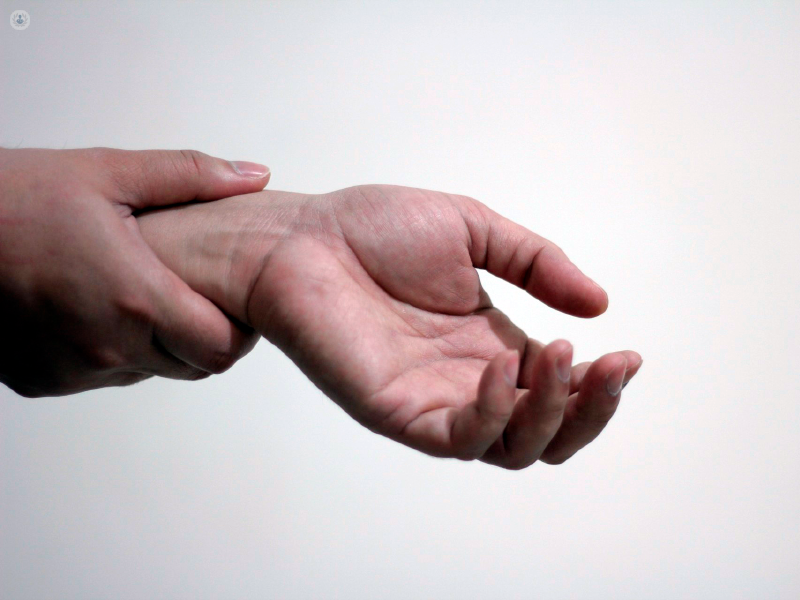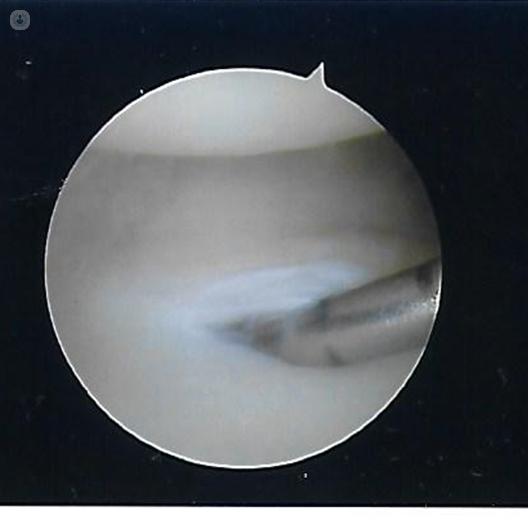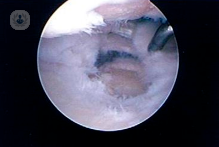Wrist arthroscopy: who needs it and what it involves
Escrito por:While many wrist injuries will heal on their own over time, some might require a surgical operation. In recent year, we have developed ways to operate on the delicate structures of the wrist with the minimal amount of damage. We asked expert hand and wrist surgeon Mr James Nicholl about what wrist arthroscopy is and who might benefit from it.

What is wrist arthroscopy?
Surgeons can perform keyhole surgery on various joints. This is called arthroscopy. It involves inserting a telescope into the joint, which is connected to a camera so that the inside of the joint can be viewed on a monitor. Specially-designed instruments can then be inserted into the joint through very small incisions, allowing the surgeon to perform a wide variety of operations on various structures within the joint.
Arthroscopy of the wrist is a common operation. The telescope used is smaller than that used for arthroscopy of the knee or shoulder, but still allows a good view of the inside of the wrist joint.
Who needs wrist arthroscopy?
There are a number of conditions of the wrist which can be successfully treated with arthroscopic surgery. Before an arthroscopy is performed the surgeon will usually have a fairly good idea of what will be found based on the history given by the patient, an examination of the wrist, and the findings from X-rays and scans.
One of the most common pathologies of the wrist treated arthroscopically is a tear of a structure on the little finger side of the wrist called the triangular fibrocartilage. Patients may give a history of trauma to the wrist or the damage can develop over time through wear and tear. They complain of pain on that side of the wrist, often made worse by holding a weight or twisting movements. They are tender on that side of the wrist and an MRI scan will usually demonstrate the tear.


Other conditions which can be successfully treated are partial tears of ligaments or where there is damage to the surface of the joint and an unstable flap of tissue. Loose bodies in the wrist are rare but can be removed arthroscopically.
Is the procedure painful?
Wrist arthroscopy is performed as a day case under a general anaesthetic or regional nerve block, where the arm is numbed with local anaesthetic and the patient is awake.
To perform the arthroscopy, three or four incisions need to be made on the back of the wrist, approximately 5mm. This allows us to insert the telescope and instruments. The incisions are closed with steristrips, and a bulky bandage is applied.
At the end of the procedure local anaesthetic is injected into the wrist so that there will be little pain for the first few hours. Once this wears off, however, there is some discomfort for the first few days.
How long does it take to recover from wrist arthroscopy?
The outer bandages can be removed after 48 hours, leaving just an adhesive dressing and the steristrips in place for 12 to 14 days. During this time patients keep their hand dry but can start using it for every day activities.
For the wrist to settle completely it can take 4-6 weeks.
What does aftercare involve?
Once the steristrips have been removed, you’ll be encouraged to massage the little scars with a moisturising cream and do exercises to regain movement and strength.
How much a patient does will be determined by how quickly the wrist recovers from the surgery, and what the underlying problem was, and how successfully this has been treated.
If you have a wrist injury and you’d like to consult on your treatment options, click here to book an appointment with Mr James Nicholl .



